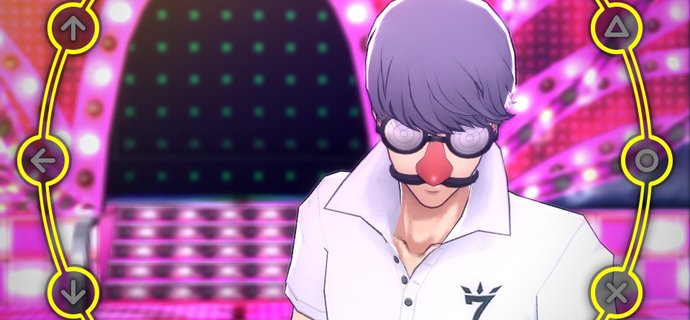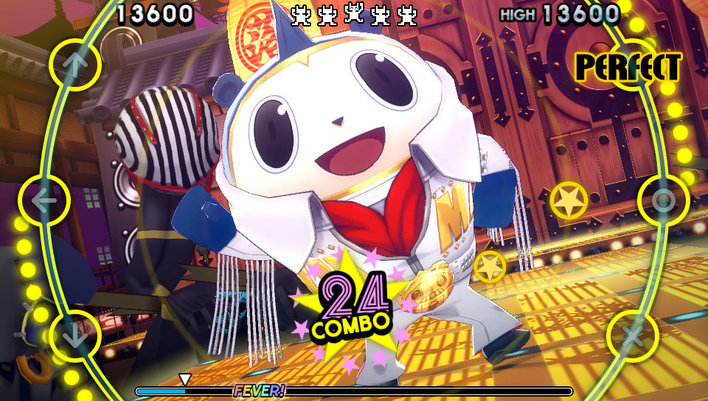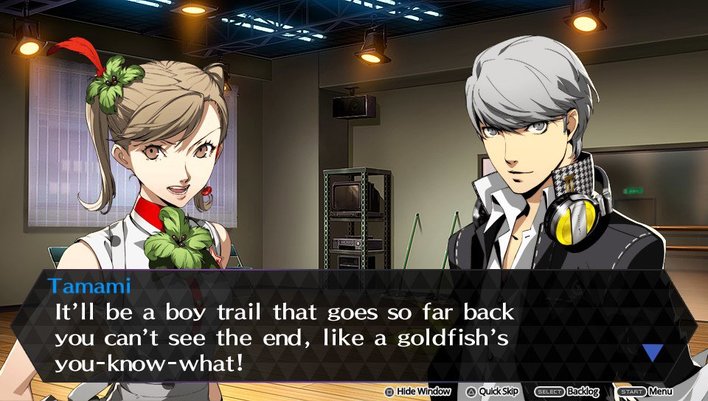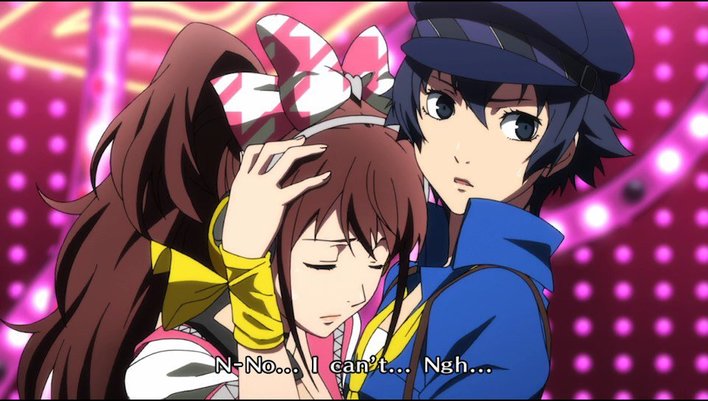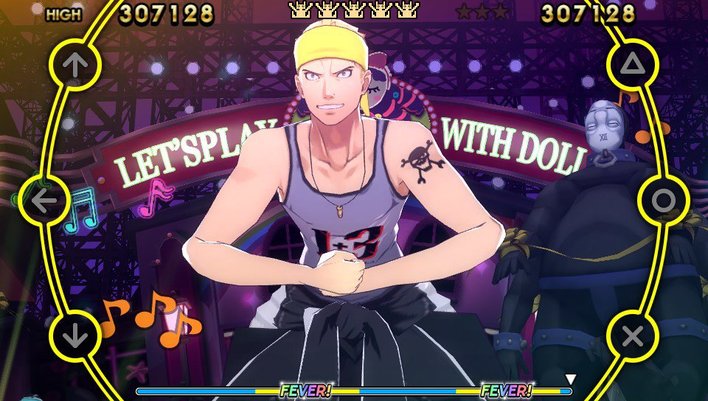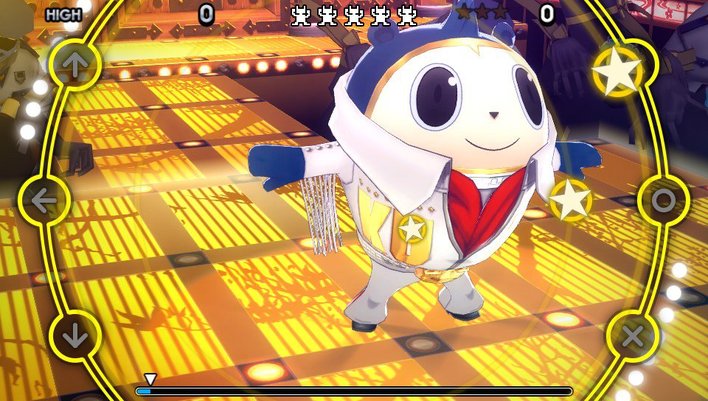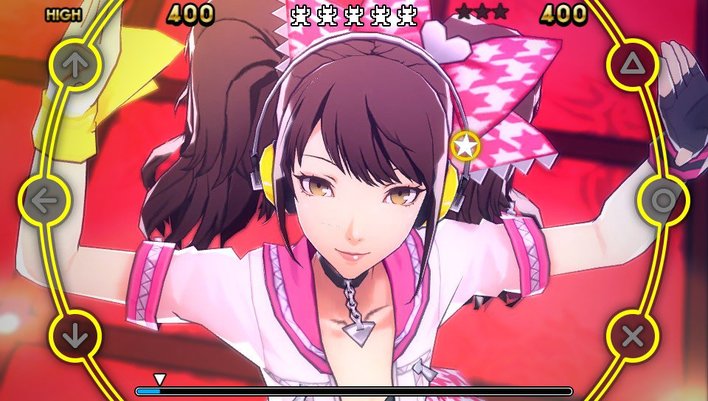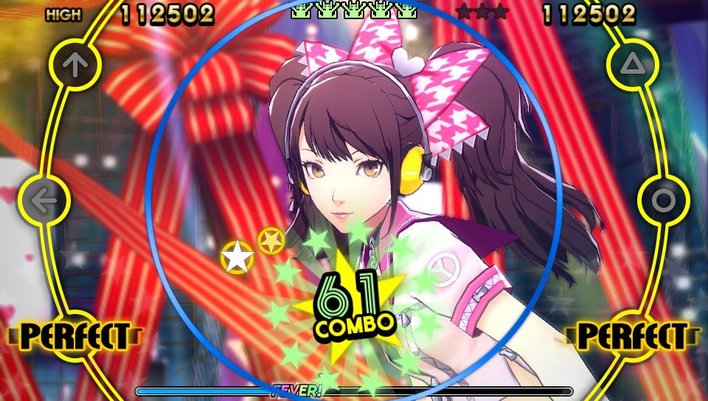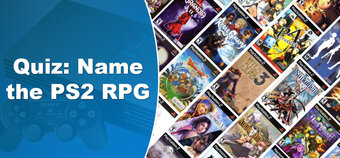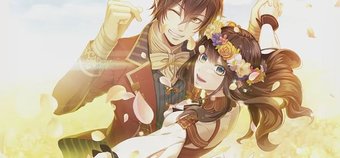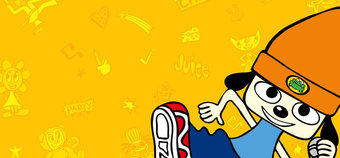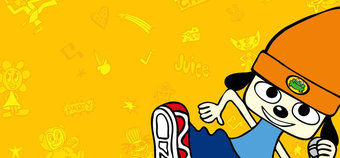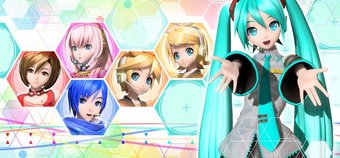For more on Persona 4: Dancing All Night, check out our full Persona 4: Dancing All Night review. Or, for more of the best PS Vita games for a 10 year old, why not try our Family Game Finder
What is Persona 4: Dancing All Night?
Persona 4: Dancing All Night is a musical rhythm action game in which players push buttons in time with on screen prompts to the beat of songs, in an effort to get as high a score as possible. There are two main modes of play here - Free Mode, which lets you pick and choose the songs you tackle, and, in a unique twist for a music game, Story Mode, which ties them all together with a text-heavy narrative that sees the Persona 4 characters set about saving four young idols from the strange shadowy world they've been trapped in.
How does Persona 4: Dancing All Night play?
Much like similar "beat matching" games like Rock Band, Guitar Hero and even the old dancing stage games, Persona 4: Dancing All Night uses a familiar enough concept as its base. Icons appear in the centre of the screen and move towards the outside - and it's up to you to press the right button as it crosses the indicators around the outside. Periodic 'scratch' notes mix things up a bit by making you wiggle the analogue stick, but do require you to move your fingers away from the face buttons momentarily - fortunately these are optional, and can be completely ignored for no ill effects, should you find them a bit too tricky. There's also three different difficulties to play on too, should you want to dial things down a little - or kick it up a notch.
What age is Persona 4: Dancing All Night suitable for? Is there anything children may struggle with?
In terms of accessibility, there are a few things younger children may find tricky about Persona 4: Dancing All Night. You can fail songs if you don't do well enough, and seeing as you need to complete songs to progress, that can be a bit of an issue for some younger players - but, you can purchase a range of items from the in-game store to make your life easier. Once bought, these modifiers can be switched on via the menu - once you've chosen a song, scroll down to "custom", then "dance settings" to pick your power ups. Revival bead lets you play to the end of a song without failing out, the diamond shield lets you miss more notes before you start to fail and the omnipotent orb lets you press any button to hit notes, regardless of what's shown on screen. You can also reduce the note speed, making them appear for longer and give you more chance of hitting them. That said, if you don't do well enough to pass a song, even with all the helper items switched on, you still won't manage to unlock new tracks to play - although you'll at least have an easier time trying.
Generally speaking, Persona 4: Dancing All Night is relatively light on the actual reading in it's Story Mode - there's walls of text, but almost all of it is fully voiced, with the exception of the periodic conversation options your character can pick from, and the thoughts that go through his head that his companions aren't privy to. Conversation options don't seem to have that much of a bearing on what happens in the story, but missing out on the main character's monologues may be more of an issue to your understanding. Of course, there is the Free Play mode, which lets you play through most of the songs without reading a thing, but ideally a solid reading ability is best to fully enjoy the game.
Sample Sentences:
- "As I thought… Knowing Yosuke, I'm sure the into on Kanamin Kitchen is accurate. And if that's the case, it's hard to think that the voice is Yuko-san. But that means..."
- "The Midnight Channel... The cause behind the mystery we were faced with when we were still just ordinary high school students. A world within TVs, the monsters called Shadows lurking there... and an enigmatic serial murder case centered in the town of Inaba."
- "Rise and Yukiko push Ms. Ochimizu aside and rush towards Kanami-san. The rest of us follow close behind."
Much like the role-playing game it's based on, Persona 4: Dancing All Night is fairly middle of the road for content - not squeaky clean, but not the worst game in the world either. As a dancing game, violence is pretty rare and brief, with the occasional cutscene showing a still of a man shooting another character, accompanied by blood stains on a shirt, or a silhouette of a figure hanging themselves. Characters sometimes discuss the sex appeal of some of the other female characters, such as "Her chest is like, BAM, while her waist is so slim!", "I love how she seems so… seductive." and "Okay, she's definitely had a boob job!", while a single solitary shower scene shows a female character with steam partially covering her chest. As for bad language, words such as b*stard, sh*t and crap crop up from time to time, although they aren't all that prevalent.
Age Ratings
Format Reviewed: PS Vita

